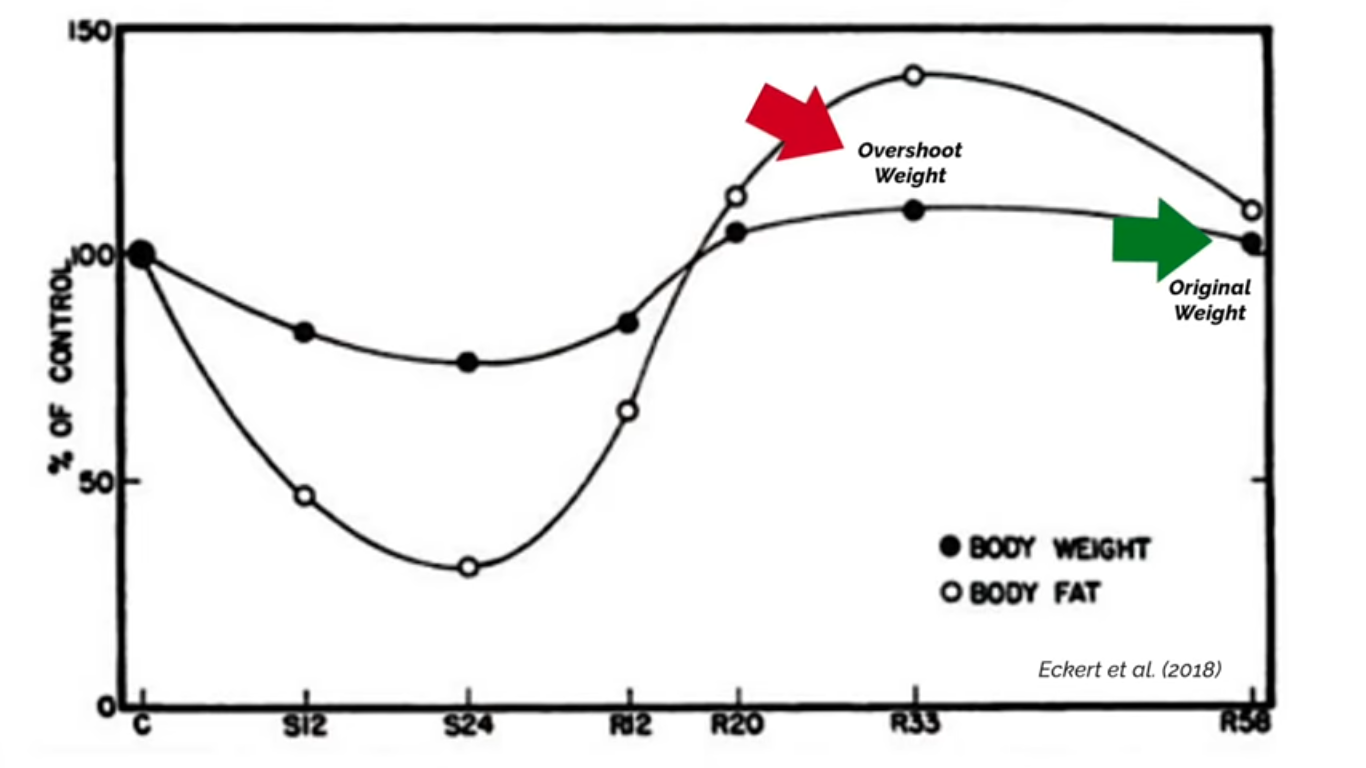WEIGHT GAIN AND RESTORATION
Anorexia fear is that recovery won’t work out as it should for me, even if it might for everyone else. One of the classic examples of this fear is the one I quoted there: ‘Because I’ve been so ill for so long, I’ve ruined my metabolism and it’s never going to normalize’.
WHY GAINING WEIGHT IS A LONG PROCESS
It’s well established that as an adaptive response to reduced food availability, the body’s basal metabolic rate is reduced, to lessen the negative impact of undernutrition.
When in a state of malnourishment, hormone levels that regulate tissue growth are decreased and cells become resistant to their effects. The net result is that more glucose becomes available for vital organs and vital movement. A malnourished body assumes that this movement is aimed toward getting food to eat – not with the goal of exercising or burning more calories. The same hormones that contribute to building lean body mass and body fat remain ineffective when you begin eating more. At this point, energy and nutrients are primarily directed toward restoring function to vital organs.
The body must use the food first to reconstruct body tissue lost during starvation. The extra calories go toward repairing the heart, brain, cells, bones, hair, nails, blood, muscles, joints, intestines, hormones, and skin. After restoring its tissues to a healthy state, the body will put the remaining fuel in storage, which will promote weight gain. This is a difficult and long process because, like any time a person wants to gain weight, the energy requirements must be surpassed each day for weight gain to continue.

WEIGHT GAIN JOURNEY
The first step is for the body to gain water weight to achieve normal hydration. Here the body is moving from a dehydrated state to a hydrated state. This can occur suddenly and can be severely uncomfortable because the change is immediate. For instance, you can gain several pounds of “water weight” overnight.
Hunger may become obvious once your body starts using and requesting more energy. However, depression, stress, and anxiety can still be potent appetite suppressants even as your body demands food. Everything is going to be hard at the beginning.
Many worry about developing a “refeeding belly.” A clinical definition for a refeeding belly does not exist. Many often worry that they will look pregnant or have an abdominal circumference above a “normal” or tolerable level. Sometimes it is impossible to avoid abdominal discomfort.
Research indicates that weight gain will often occur first in the abdomen before it does in the legs and arms. This adaptive process occurs in order for body fat to protect and separate vital organs. Due to initial weight gain in the abdomen, one can have the experience of feeling “disproportionate” because the arms and legs have yet to catch up.
Research suggests that it can actually take up to 12 months for the body to fully heal from malnutrition. At this point, the majority of work to restore hydration is complete.
What is weight restoration
Weight restoration is not an optional part of recovery; it is an essential part.
Weight restoration in the process of eating disorder recovery refers to an individual reaching weight stability. This means that an individual reaches a weight that is healthy for them, meets their nutritional and growth needs, and is a weight that they are able to maintain long-term.
Weight restoration following a restrictive eating disorder may take months depending on how sick the individual is. This process often requires an individual to drastically increase their caloric intake in order to gain weight at a safe and steady rate.
It is about returning your mind to a healthy place rather than one in starvation mode so that you can actually do the emotional work.
Individuals in the process of weight restoration may also experience physical side effects such as bloating, constipation, headaches, farting, and other gastrointestinal issues as their body adjust to proper nourishment. While these symptoms are troublesome, they will go away as an individual continues to follow their meal plan. If these side effects are particularly bothersome, it’s recommended to discuss them with your doctor or dietitian.
Is Full Weight Restoration and Recovery Possible?
With treatment, Steinhausen showed that only “46% of patients fully recover from anorexia nervosa, a third improved with only partial or residual features of the disorder, and 20% remained chronically ill for the long-term. A low body mass index (BMI), greater severity of social and psychological problems, self-induced vomiting, and purgative abuse have been identified as predictors of a poor outcome in this disorder.”
The “risk of death was highest for those with anorexia nervosa, with a weighted annual mortality rate of 5 per 1000 person-years (slightly higher in studies of females only)”.

People’s body shapes are different. We evolved to survive starvation. Mother Nature has a million ways in which she helps a body stay alive through months of caloric deprivation. For one, people may hold extra weight in their abdomen and face, the “checking account” from which the body could rapidly use energy should intake drop again, for up to a year after nutritional rehabilitation. Your body will store a lot of fat in the necessary places to protect your organs. Bodies are miraculous and extraordinary; when given rest, ease from stress and trauma, and satisfying, adequate fuel, they know what to do.
MY WEIGHT RESTORATION
 October
October
 June
June
RESOURCES: 1. https://anorexiafamily.com/weight-restoration-eating-disorder/?v=fd4c638da5f8
2. https://www.emilyprogram.com/blog/understanding-weight-gain-in-recovery/
3. https://mirror-mirror.org/getting-help/working-through-the-weight-restoration-phase-of-anorexia-nervosa
4. https://www.verywellmind.com/restoring-nutritional-health-in-anorexia-nervosa-recovery-4115081
